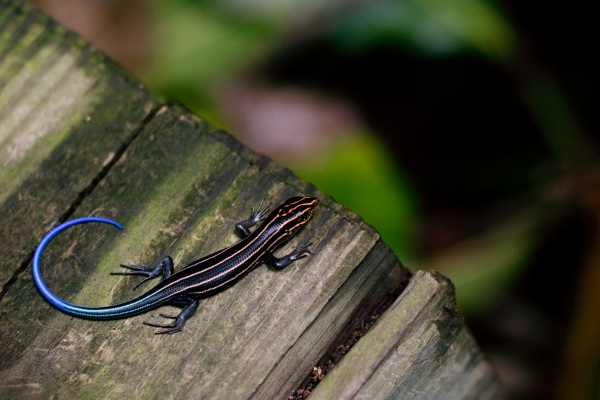Facts About Plestiodon
Plestiodon is a genus of lizards in the family Scincidae, renowned for their sleek, shiny scales and secretive behavior. Initially, many species now categorized under Plestiodon were classified as Eumeces, except for those reclassified into Mesoscincus. These agile creatures are found across a wide geographical range, from East Asia to North America, extending from southern Canada to Mexico, and even on islands such as Bermuda.
One of the most striking features of Plestiodon lizards is their vivid coloration, which is crucial for their survival. When predators attack, they often target the brightly colored tail, which can easily detach. This clever defensive tactic, known as autotomy, allows the skink to escape, and they possess the ability to regenerate their tails.
Plestiodon lizards are oviparous, meaning they lay eggs. Typically, they lay 5 to 10 eggs annually, with hatchlings emerging in late summer. Like other reptiles, these skinks are ectothermic, relying on external heat sources to regulate their body temperature. They bask in the sun to warm up and hibernate during the cold winter months. In hotter climates, they are most active during the cooler parts of the day, such as mornings and evenings, to avoid overheating.
Recent taxonomic revisions have reshaped our understanding of these lizards. The 19th-century genus Eumeces was found to be paraphyletic, which means it did not accurately represent the evolutionary relationships among its species. Researchers like Griffith et al. and Schmitz et al. proposed splitting it into several genera, including Plestiodon, Eurylepis, and Mesoscincus.
For example, species like Eumeces poonaensis and Eumeces taeniolatus have been moved to the genus Eurylepis. Meanwhile, Eumeces altamirani, Eumeces managuae, and Eumeces schwartzei are now classified under Mesoscincus. This reorganization more accurately reflects the true evolutionary pathways of these fascinating lizards.
